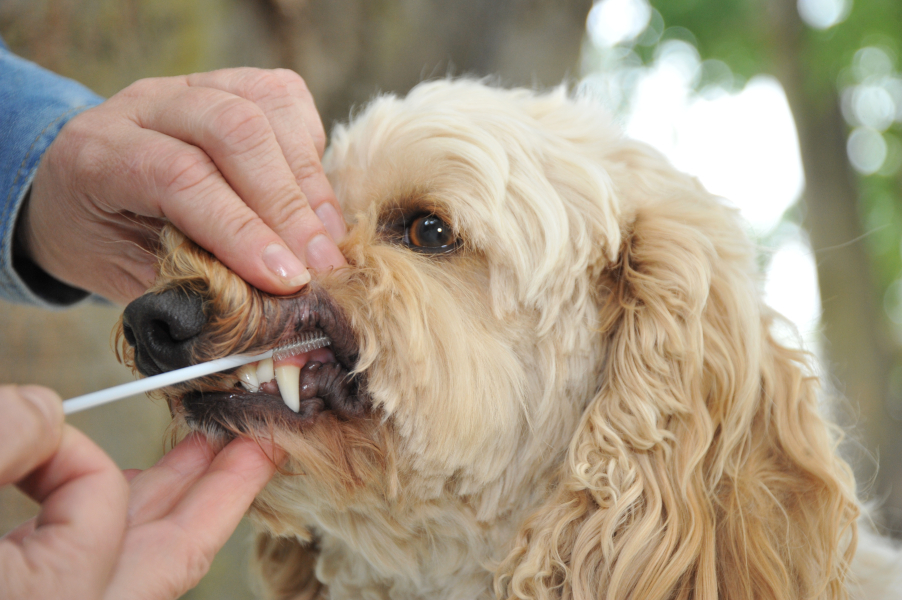Quick Summary
Click here for Price and Turnaround Time
Phenotype: Primary lens luxation appears spontaneously, typically between 3-8 years, although both eyes are not necessarily affected at the same time. Watery, red, teary eyes may indicate that lens luxation has occurred and veterinary intervention is required.
Mode of Inheritance: Autosomal recessive
Alleles: N = Normal, PLL = Primary lens luxation
Breeds appropriate for testing: Terrier breeds (many), American Eskimo Dog, Australian Cattle Dog, Chinese Crested, Chinese Foo Dog, Danish-Swedish Farmdog, Italian Greyhound, Lancashire Heeler, Volpino Italiano
Explanation of Results:
- Dogs with N/N genotype will not have primary lens luxation and cannot transmit this variant to their offspring.
- Dogs with N/PLL genotype are at slight risk of developing primary lens luxation and are carriers. They will transmit this variant to 50% of their offspring. Matings between two carriers are predicted to produce 25% primary lens luxation-affected puppies.
- Dogs with PLL/PLL genotype will have or are at risk of developing primary lens luxation, a condition that can lead to blindness if untreated. They will transmit this variant to all of their offspring.
Results of this test can be submitted to the OFA (Orthopedic Foundation for Animals)
Sample Collection
Dog DNA tests are carried out using cells brushed from your dog's cheeks and gums. The preferred cytology brushes are sent to you by mail, or you may provide your own brushes. For accepted alternative brushes, click here
We recommend waiting until puppies are at least three weeks old before testing.

Step-By-Step:
- Make sure the dog has not had anything to eat or drink for at least 1 hour prior to collecting sample.
- When swabbing puppies, isolate each puppy from the mother, littermates and any shared toys for 1 hour prior to swabbing. Puppies should not have nursed or eaten for 1 hour prior to collecting sample.
- If collecting samples from more than one dog, make sure to sample one dog at a time and wash your hands before swabbing another dog.
- Label brush sleeve with name or ID of dog to be sampled.
- Open brush sleeve by arrow and remove one brush by its handle.
- Place bristle head between the dog’s gums and cheek and press lightly on the outside of the cheek while rubbing or rotating the brush back and forth for 15 seconds.
- Wave the brush in the air for 20 seconds to air dry.
- Insert brush back into sleeve.
- Repeat steps 5 - 8 for each unused brush in sleeve on a fresh area of cheek and gums. Make sure to use and return all brushes sent by the VGL. In most cases, it will be 3 brushes per dog. If using interdental gum brushes, please note that the VGL requires 4 brushes per dog and only moderate or wide interdental gum brushes are accepted.
- Do not seal brushes in sleeve.
- Place all samples in an envelope and return to the address provided.
ATTENTION:
- Do not collect saliva/drool – the key to obtaining a good sample is getting cheek cells on the swab
- Do not rub swab on the dog’s tongue or teeth – this will result in poor quality sample
- Do not collect a sample from a puppy that has recently nursed – the mother’s genetic material can rub off on the puppy’s mouth and contaminate the sample
Primary Lens Luxation (PLL) is a painful inherited eye disorder where the lens of the eye moves from its normal position causing inflammation and glaucoma. PLL results from a single base change mutation in the gene ADAMST17 (ADAMTS17:c.1473+1). If untreated, the condition can rapidly lead to blindness.
The study identifying this ADAMTS17 disease variant looked at 196 dogs from three different breeds (Jack Russell Terrier, Miniature Bull Terrier and Lancashire Heeler) that had been clinically diagnosed with PLL and found that 161 of them had two copies of this variant. Further RNA analysis showed that this ADAMTS17 variant resulted in a truncated transcript that was abnormal. Combined, these findings showed a strong association between the ADAMTS17:c.1473+1 variant and PLL in all three studied breeds. A subsequent study later identified this ADAMTS17 variant in PLL-affected dogs of various other breeds. However, 12 dogs diagnosed with PLL in the original study did not have this disease variant, indicating that while this ADAMTS17 variant is a common cause for PLL in several dog breeds, it is not the only one.
The disease is inherited in an autosomal recessive fashion thus both sexes are equally affected. PLL appears spontaneously, typically between 3-8 years, although both eyes are not necessarily affected at the same time. Watery, red, teary eyes may indicate that lens luxation has occurred and veterinary intervention is required. Dogs with only one copy of the disease mutation most frequently show no sign of the disease but can, on occasion, develop PLL. Breeding between two carriers is expected to produce 25% affected offspring.
Testing for PLL assists owners and breeders in identifying affected and carrier dogs. Breeders can use results from the test as a tool for selection of mating pairs to avoid producing affected dogs.
